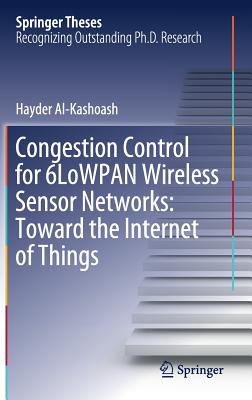Bats Codes: Theory and Practice
暫譯: 蝙蝠程式碼:理論與實踐
Yang, Shenghao, Yeung, Raymond W., Srikant, R.
- 出版商: Morgan & Claypool
- 出版日期: 2017-09-19
- 售價: $3,050
- 貴賓價: 9.5 折 $2,898
- 語言: 英文
- 頁數: 226
- 裝訂: Quality Paper - also called trade paper
- ISBN: 1627055975
- ISBN-13: 9781627055970
-
相關分類:
Webduino
海外代購書籍(需單獨結帳)
相關主題
商品描述
This book discusses an efficient random linear network coding scheme, called BATched Sparse code, or BATS code, which is proposed for communication through multi-hop networks with packet loss. Multi-hop wireless networks have applications in the Internet of Things (IoT), space, and under-water network communications, where the packet loss rate per network link is high, and feedbacks have long delays and are unreliable. Traditional schemes like retransmission and fountain codes are not sufficient to resolve the packet loss so that the existing communication solutions for multi-hop wireless networks have either long delay or low throughput when the network length is longer than a few hops. These issues can be resolved by employing network coding in the network, but the high computational and storage costs of such schemes prohibit their implementation in many devices, in particular, IoT devices that typically have low computational power and very limited storage.
A BATS code consists of an outer code and an inner code. As a matrix generalization of a fountain code, the outer code generates a potentially unlimited number of batches, each of which consists of a certain number (called the batch size) of coded packets. The inner code comprises (random) linear network coding at the intermediate network nodes, which is applied on packets belonging to the same batch. When the batch size is 1, the outer code reduces to an LT code (or Raptor code if precode is applied), and network coding of the batches reduces to packet forwarding. BATS codes preserve the salient features of fountain codes, in particular, their rateless property and low encoding/decoding complexity. BATS codes also achieve the throughput gain of random linear network coding. This book focuses on the fundamental features and performance analysis of BATS codes, and includes some guidelines and examples on how to design a network protocol using BATS codes.
商品描述(中文翻譯)
這本書討論了一種高效的隨機線性網路編碼方案,稱為BATched Sparse code,或簡稱BATS code,該方案是為了在多跳網路中進行通信而提出的,特別是在存在封包丟失的情況下。多跳無線網路在物聯網(IoT)、太空和水下網路通信中有應用,這些環境中每個網路鏈路的封包丟失率較高,且反饋延遲長且不可靠。傳統的方案如重傳和噴泉碼無法有效解決封包丟失的問題,因此現有的多跳無線網路通信解決方案在網路長度超過幾個跳時,通常會面臨長延遲或低吞吐量的情況。這些問題可以通過在網路中採用網路編碼來解決,但這類方案的高計算和存儲成本使得它們在許多設備中無法實施,特別是那些通常計算能力低且存儲非常有限的IoT設備。
BATS code由外部編碼和內部編碼組成。作為噴泉碼的矩陣推廣,外部編碼生成潛在無限數量的批次,每個批次由一定數量(稱為批次大小)的編碼封包組成。內部編碼則是在中間網路節點進行的(隨機)線性網路編碼,應用於屬於同一批次的封包。當批次大小為1時,外部編碼簡化為LT碼(如果應用預編碼則為Raptor碼),而批次的網路編碼則簡化為封包轉發。BATS碼保留了噴泉碼的顯著特徵,特別是它們的無率性質和低編碼/解碼複雜度。BATS碼還實現了隨機線性網路編碼的吞吐量增益。本書專注於BATS碼的基本特徵和性能分析,並包括一些設計使用BATS碼的網路協議的指導方針和範例。































